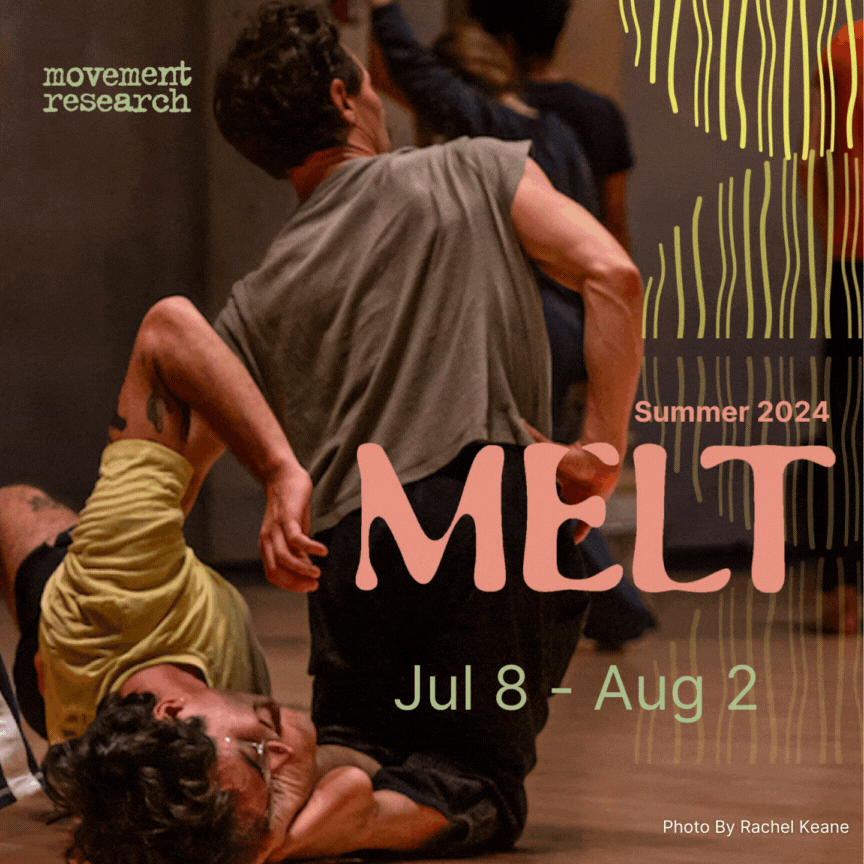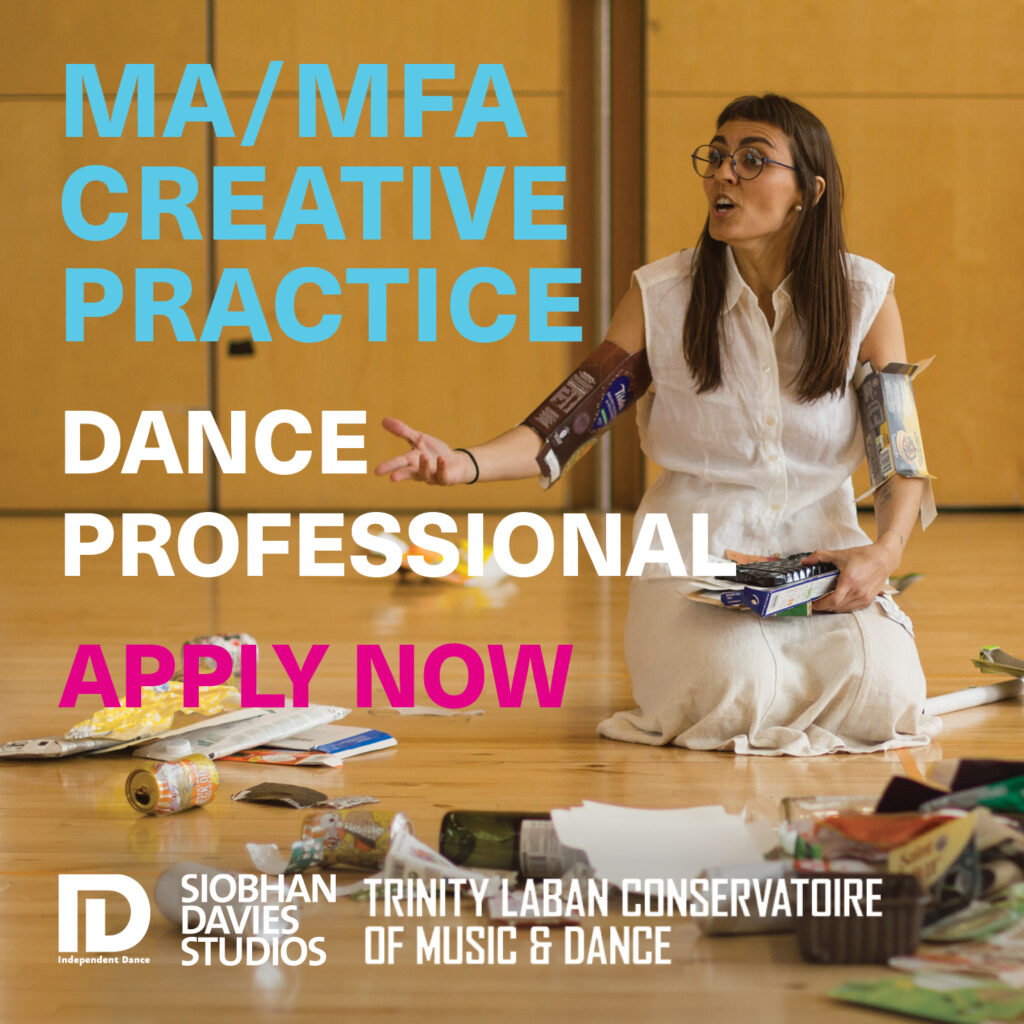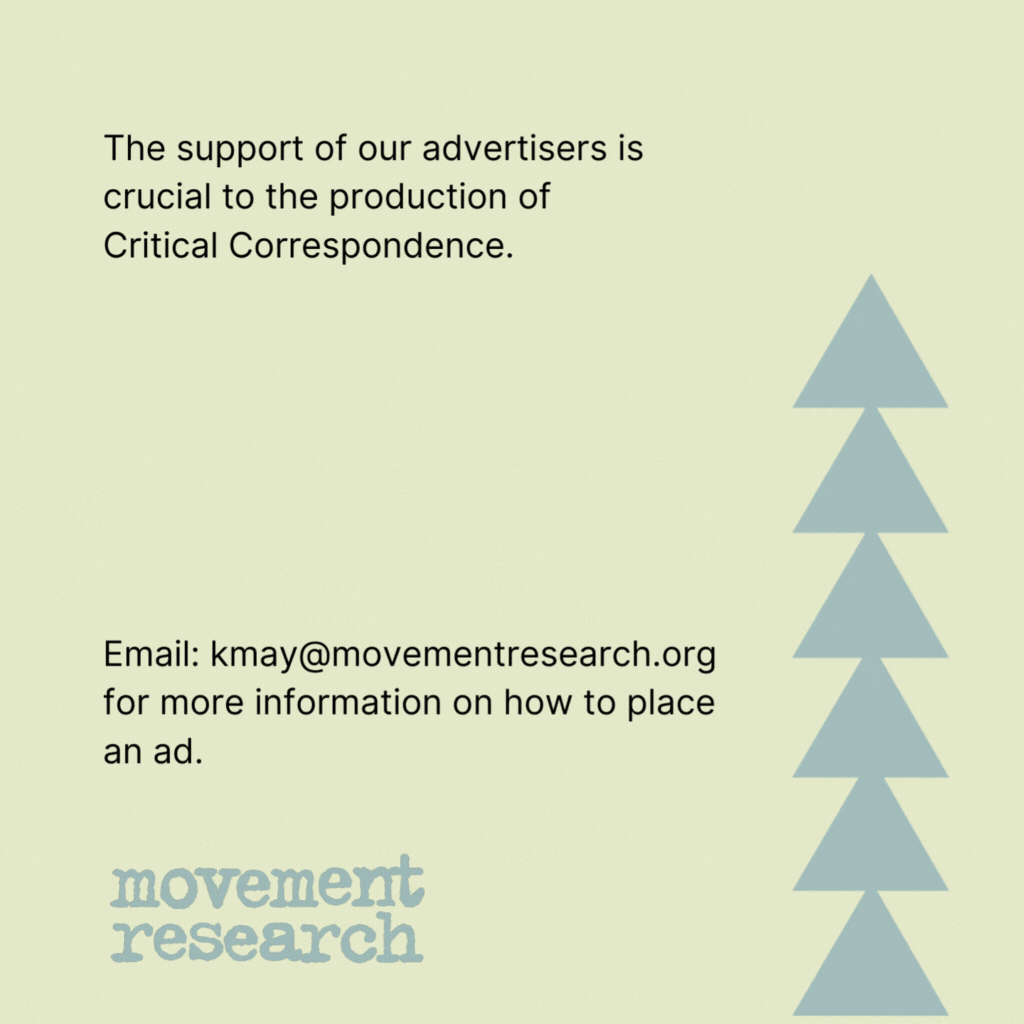Chicago-based choreographer Greer Dworman talks with choreographer Rachel Thorne Germond. Germond will present Return, an evening of work by her company and friends, at Links Hall in Chicago, June 22-24. Dworman and Germond discuss the Chicago dance scene and queerness in concert dance.
Interview Date: May 24, 2012
Download a PDF of this conversation
Greer Dworman: You are curating a show back in Chicago after being gone for some time. What motivated you to come back to Chicago?
Rachel Thorne Germond: I lived in Chicago for ten years and I spent a considerable amount of time developing my work and my company there and training dancers. I had to leave Chicago in 2010—my partner is in medicine and she had a fellowship in Virginia, so we left Chicago and I left my company. In fall of 2011, we found out we would not be going back to Chicago. I wanted to go back and continue to have a connection to Chicago even if I’m not living there.

Greer: You chose Links Hall. Links is a beacon of the community in Chicago.
Rachel: Yes, it is! And most of the shows that I did when I lived there were at Links Hall, so I also wanted to reconnect to that scene.
Greer: The work that you are bringing, is that work that you made while you were living here? Or, is it a span of repertoire from your career at large?
Rachel: It’s a span of repertoire. One piece was made in Chicago and developed in Virginia. One solo was made here. And, another work from 2000 from when I was in graduate school at [University of Illinois] Champaign-Urbana.
Greer: I am really interested in how the landscape shifts from place to place in terms of the artist and the audience.
Rachel: I think the arts scene in any location is going to be different. It’s going to be affected by the people who live in the community. It’s going to be affected by the history, not only of the arts and dance in the city, but of support for the arts. It depends on what the relationship to critics is. I know when I first moved to Chicago, there wasn’t nearly as much writing about the smaller companies there. It was mostly about Hubbard Street and the Joffrey and I know I saw the scene in Chicago change a lot from 2001 to 2010 in terms of much more experimental work being performed.
I know you said you felt like the dance scene in Chicago is a lot more conservative, but it actually used to be more conservative. There’s definitely an aesthetic to Brooklyn and the downtown New York dance scene that relates them to the history there with postmodernism. I felt like in Chicago, it was like postmodernism never happened, even though [pioneering postmodern dance center] Mo Ming had been there in the 80s. I know there was a certain dance critic there, I think her name was Anne Barzel, who didn’t particularly like postmodernism, so it wasn’t written about. The emphasis in Chicago has always been on ballet and jazz; it’s a ballet and jazz town.

[In Chicago] you find this very experimental, interesting performance art, like Goat Island, but oftentimes it doesn’t have a lot of movement. I always wish that work would have more choreography in it. I felt it odd in Chicago how there was a kind of split between performance art and modern dance, whereas in New York, I felt like a lot of what is considered to be dance, in Chicago, might have been labeled performance art. In one way, I feel like that reflects the entire city of Chicago because it’s such a large city, not population wise, but geographically it’s 30 miles long. New Yorkis all pushed together and everyone has to deal with one another and in Chicago it’s much more segregated, so I felt the arts themselves reflected that.
In Virginia, I am finding a new climate. I am living in a much smaller town and much smaller community. There is only one funded professional company here and I am trying to figure out how to establish myself as a company in this community. I’ve reestablished my ties with New York and I am interested in performing now in festivals. I think my sense of community has been expanded.
Greer: You’re bringing a couple solos to Chicago; are those things that you worked on primarily alone or you worked on with the dancer?
Rachel: For me, the way that I started choreographing was in a workshop. I was on scholarship at Mary Anthony Studios in New York and wasn’t sure if I wanted to dance professionally, but it was when I took this choreography class that I figured out that I wanted to be a dance artist. For two years I worked with Anna Sokolow in a very intensive and specific way. She required us to do solo work. I think it was very difficult and emotional but I feel like I learned so much from her about musicality, theatricality, the phrasing of movement.

For me, coming from a visual arts background, it was actually much easier to move groups of people around and design the space. I felt like working as a solo artist forced me to work in a way that was more challenging to me. From the inside out, from my deepest, inner perspective.
I feel like the solos are different from the group works. They tend to be more psychological and probing and somewhat autobiographical—personal things I am working through at that time. I feel the solos are not as successful as the group works because there’s a lot of experimentation and layering that I haven’t figured out yet. I’ll always probably continue to make solos just as a place to experiment. And, being in the studio by myself, you’re right, it is hard, but if I don’t do that, then I am not as grounded when I get into the studio with a group. I’m a little bit shy and I need that time by myself to get myself together so I can deal with telling other people what to do.
Greer: I back away from the space when I’m in it by myself because I feel like it could be anything, so I can’t really decide. There are too many possibilities for what could happen.
Rachel: There are all kinds of structures and games you can play with yourself to get yourself out of that. Most of the time, it’s like looking at pictures of yourself, it’s very difficult. Sometimes I like to do character work as solos because I feel like then I am not being myself, I am some other character.

Greer: You’re going to be in Chicago during Pride Weekend.
Rachel: Yes.
Greer: I don’t know if you’ve been to or seen Chicago Pride lately, but it has gotten a little bit rowdy. They had to shut it down early last year because there were too many bodies in this very concentrated amount of space. If you’re going to go for the day, you’ll have to be really prepared [laughter].
Rachel: Unfortunately, I probably won’t be able to go to the parade, I’ll probably go a little bit in the morning but I’ll be preparing for the performance that night.
Greer: I’ve been working on getting your show on the Pride Calendar and I think it’s kind of an interesting part of the mix. There’s not a lot of dance during the pride festivities.
Rachel: Yes, that was another thing about being in Chicago that I loved which I didn’t feel as much in New York, and certainly don’t feel here in Virginia, was this connection between the queer community and the queer performance community. I did work with the Chicago Kings and the Girly Q Variety Hour. I felt those sorts of performances worked well in conjunction with pride. Modern dance has never been a big favorite of the queer dance [scene]. I was always trying to figure out how to get more people interested in modern dance and many people supported my work because of my involvement in Girly Q and the Chicago Kings, but I’m not sure why that doesn’t crossover as much.
Greer: When we talk about dance and queerness it goes to an academic place…and it’s interesting to see those two things mingle.
Rachel: Academics and burlesque?
Greer: Exactly! We were talking about queer themes and concert dance and I feel like that’s a conversation people are always having. Depending on who you’re talking to, everyone approaches it differently. I have teachers who tell me that being queer inherently makes your work queer…you wouldn’t identify your work in a queer genre, per se?
Rachel: I would identify some of it, perhaps. I made pieces specifically for the Chicago Kings performances. I was interested in performing as Elvis in drag. They made that whole women playing Elvis in Vegas for Cirque du Soleil…so it doesn’t necessarily have to be a gay thing. But, I think, in general, drag is considered to be a queer thing, right? When I first made [the Elvis] piece, I was in the downtown dance scene in New Yorkand I was very confused, trying to figure out who I was. I didn’t come out until I was 27 and this was probably a couple years after I had come out. I was interested in my own queer identity.







